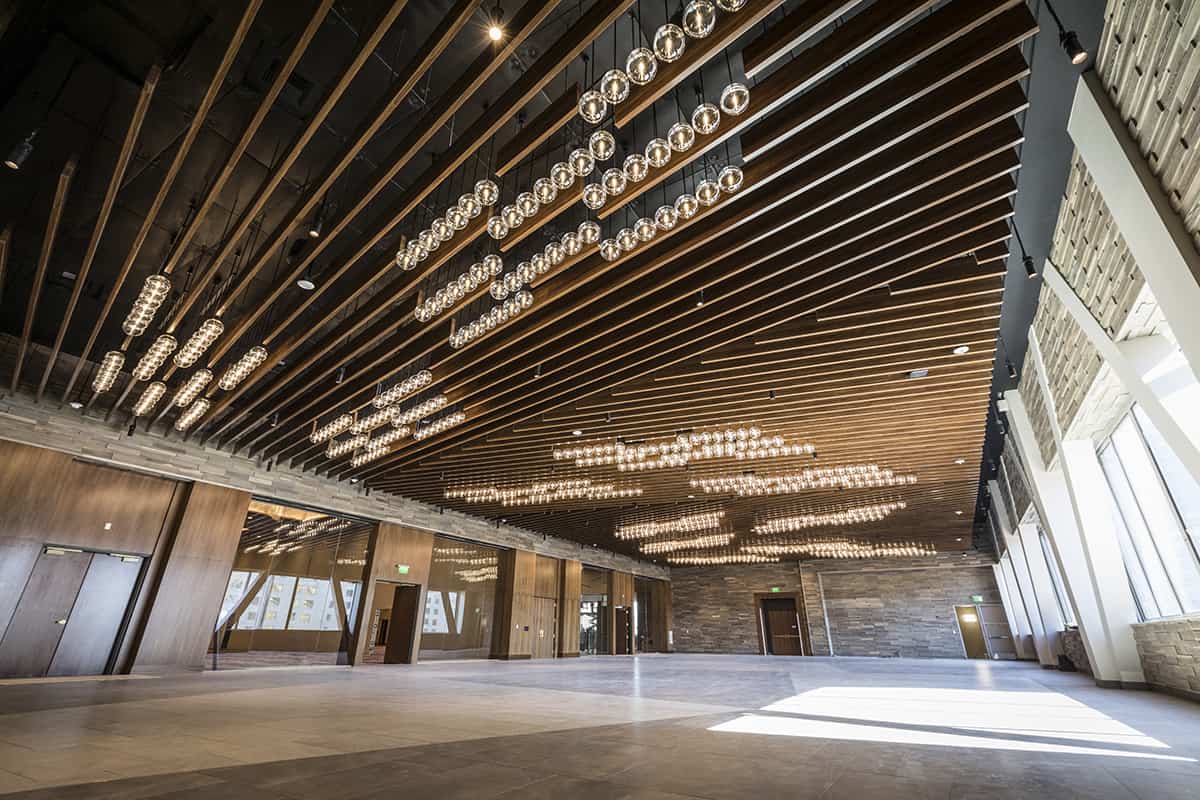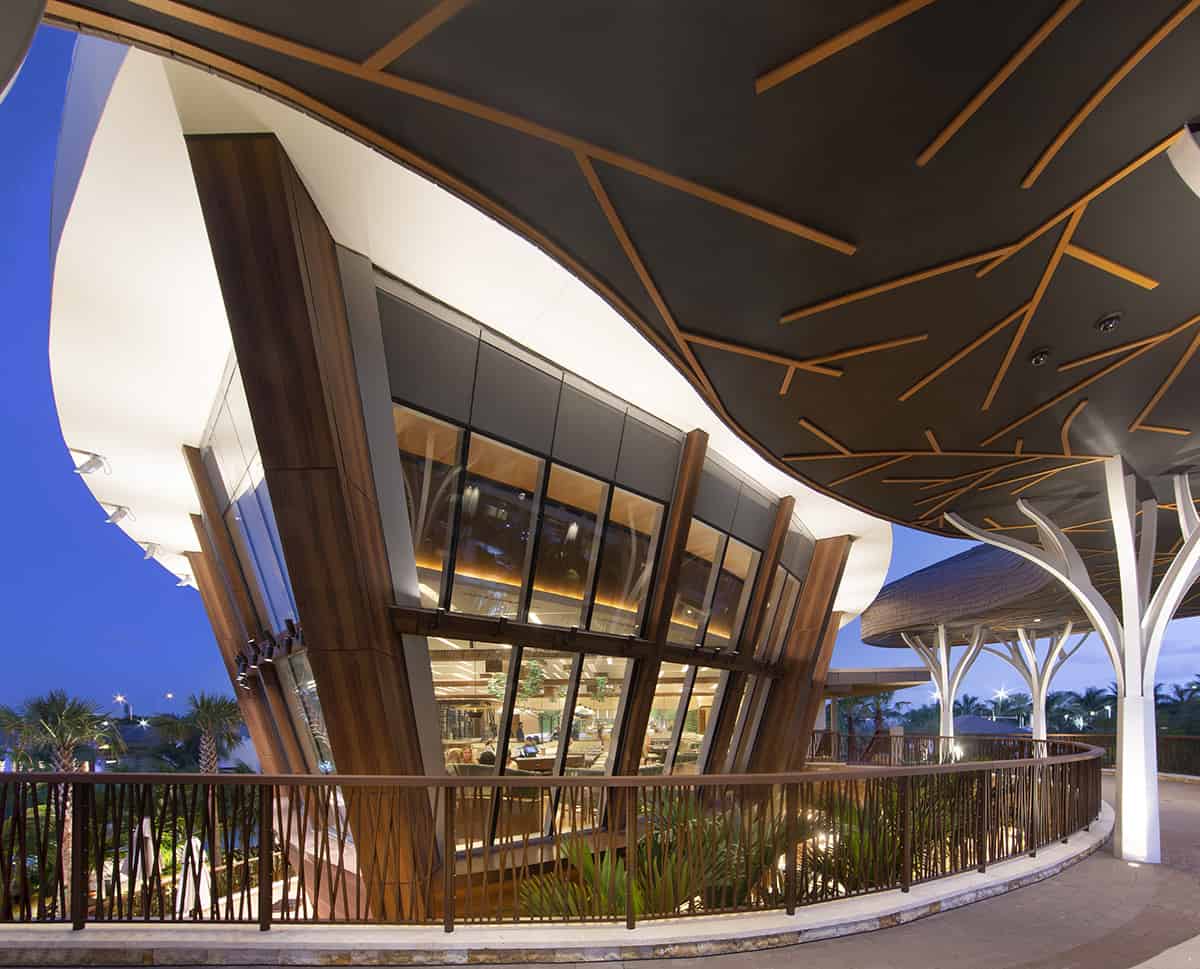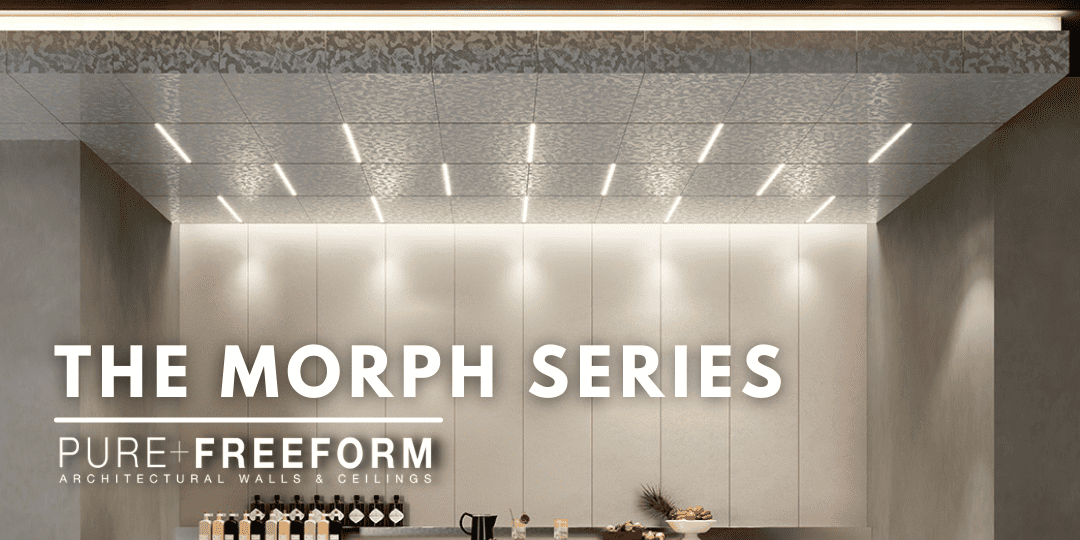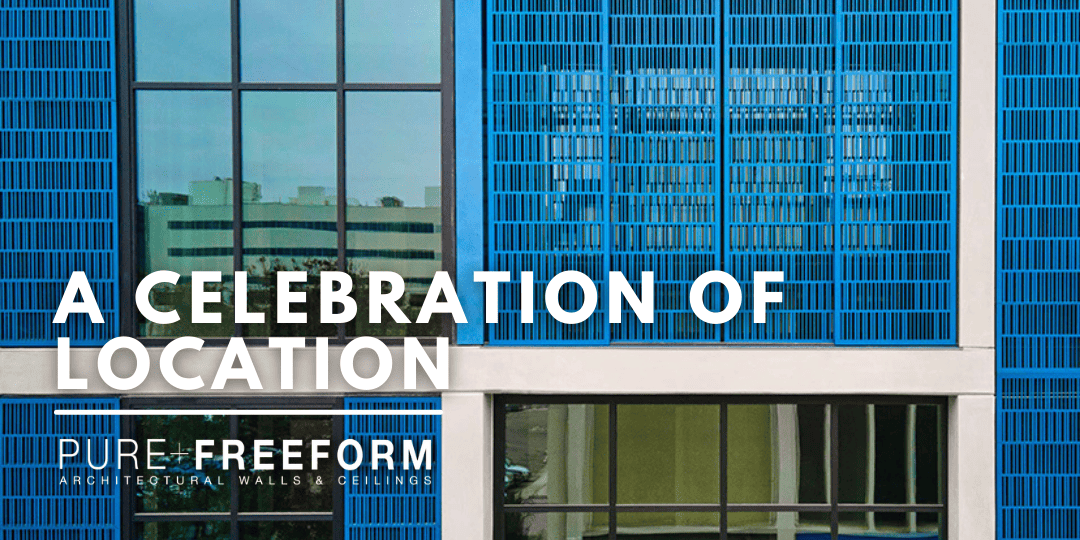
3 Tips for Designing Metal Woodgrains
Woodgrains, warm and familiar, are a design staple. Far from lacquered 70’s wall paneling and cheap vinyl, advances in surfacing technology have allowed wood-like products to maintain their relevance while offering a plethora of new applications. Whether choosing or designing a custom surface, where does one begin with wood? Creating a bespoke woodgrain is an iterative process, but these 3 wood design considerations will help you get started:
1. Color/Tone: Often the simplest place to start, choose light, medium, or dark. With our custom process, color is not limited by the species with options to add or remove certain tones, or to choose a non-wood color altogether. All with a Class A Fire Rating.
2. Species/Cut: These will dictate the appearance of the wood’s grain, either strong or subtle. We help control the surface so the appearance is consistent without being repetitive. When the material is broken up (e.g. Linear Ceilings, Baffles, Signage), cathedraling and strong figuring may be desired to create variation. On large surfaces, a simpler grain may look better to avoid strong repetition.
3. Texture/Gloss: The beauty of wood comes from not just the species, but how it is finished. Gloss can impact a space in unique and significant ways. We offer topcoats from ultra-matte to high gloss, while other industry leading wood-like products use inferior coatings that lack gloss control and also do not offer a superior AAMA 2605 durability rating. We can also add physical texture to the surface via ticking, offering warmth to the touch while allowing light to be soft and diffuse, avoiding hot spots and reflection.
See the variety of what can be achieved via this custom design process:
Light tones
Featured images: Ballston Point Exterior Transition Soffit (Cover), Collage Food Hall Torsion Spring Ceiling, Capitol Center Ceiling Baffles, Manhattan Village Signage
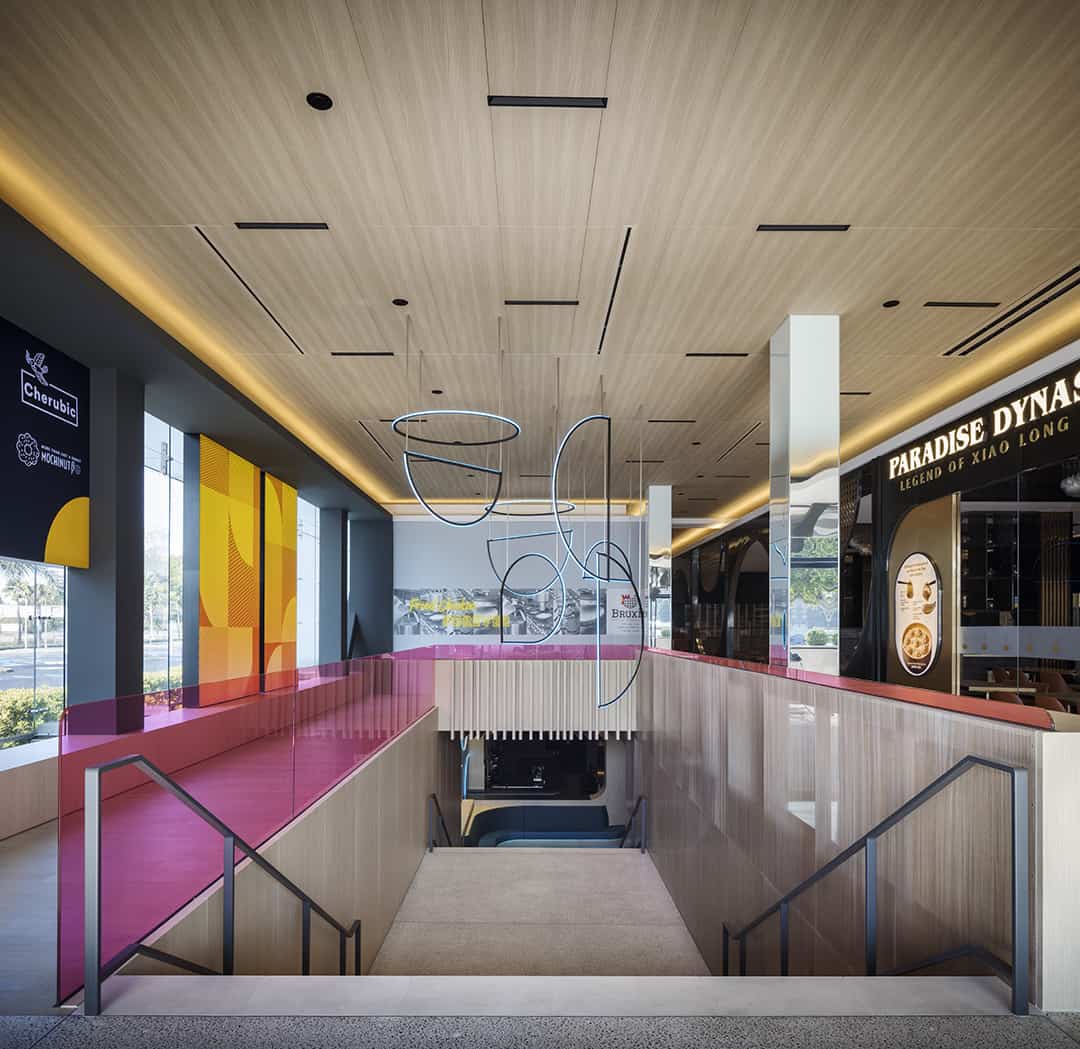
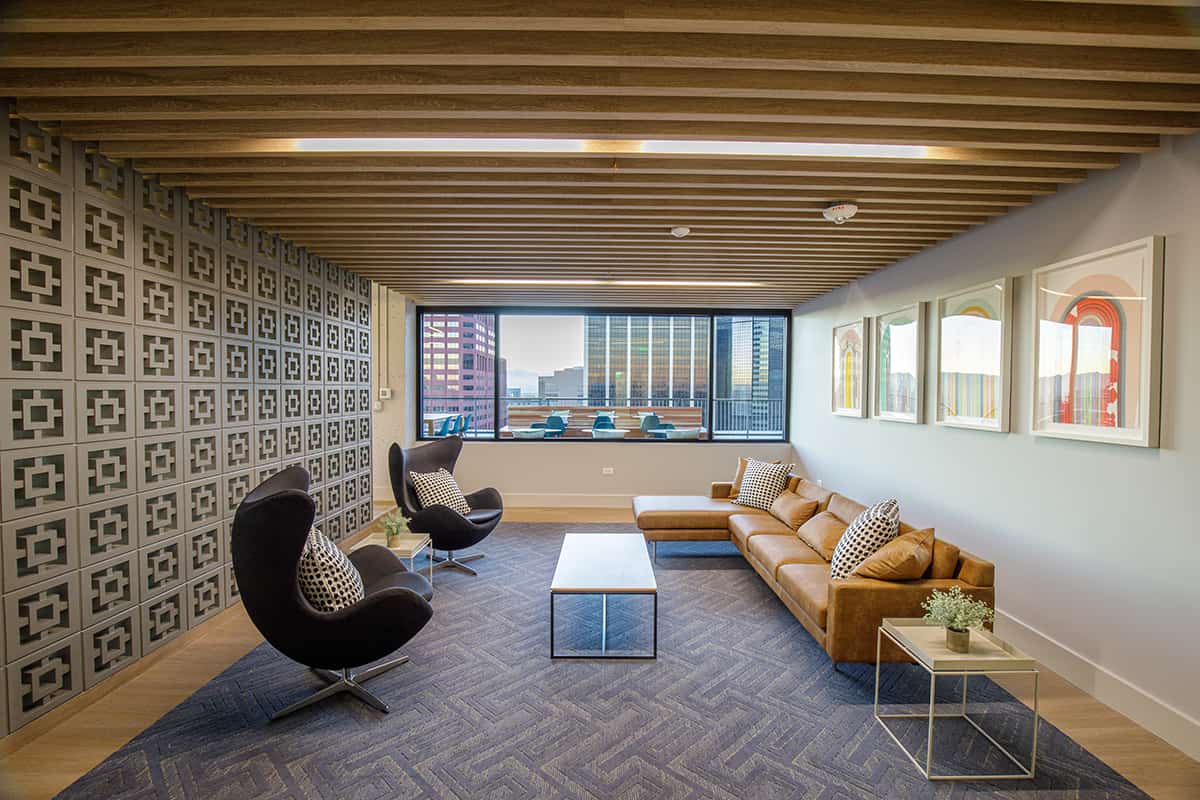
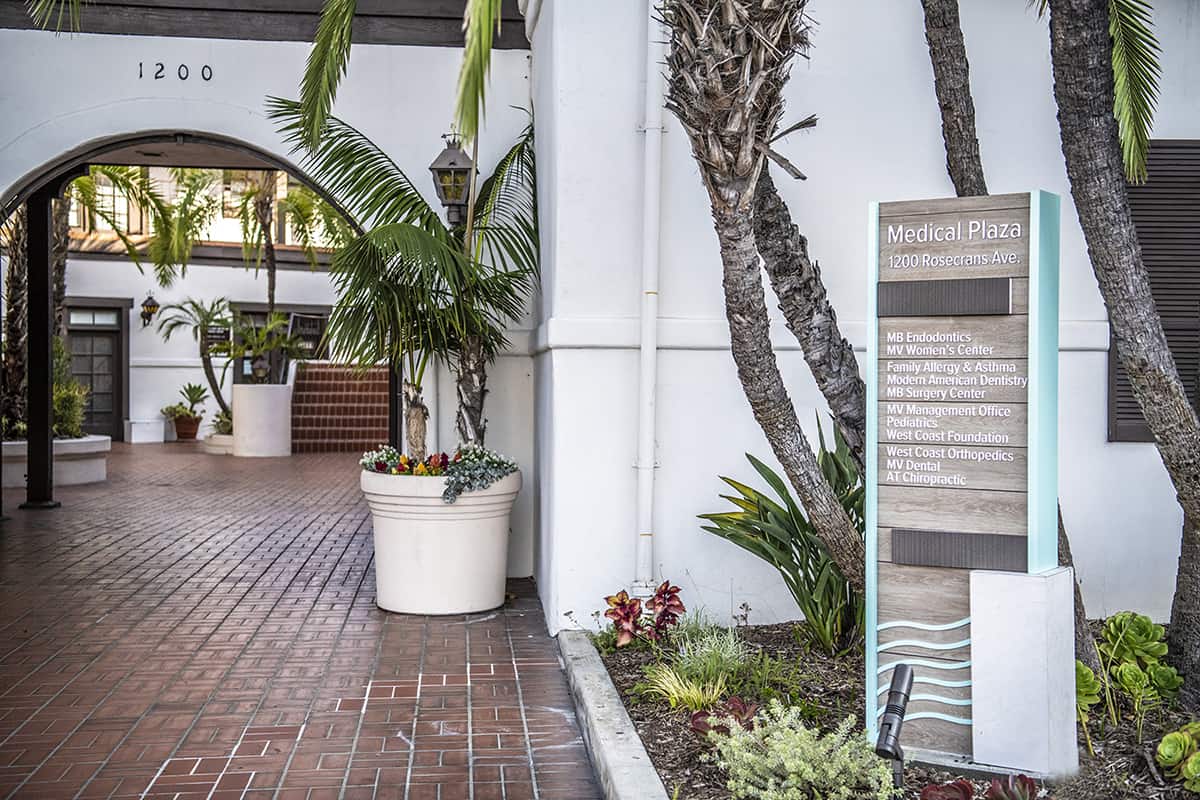
Medium tones
Featured images: Hudson Commons Exterior Canopy, 20 Hudson Yards (Retail) Ceiling, Oakville Hospital Exterior Canopy
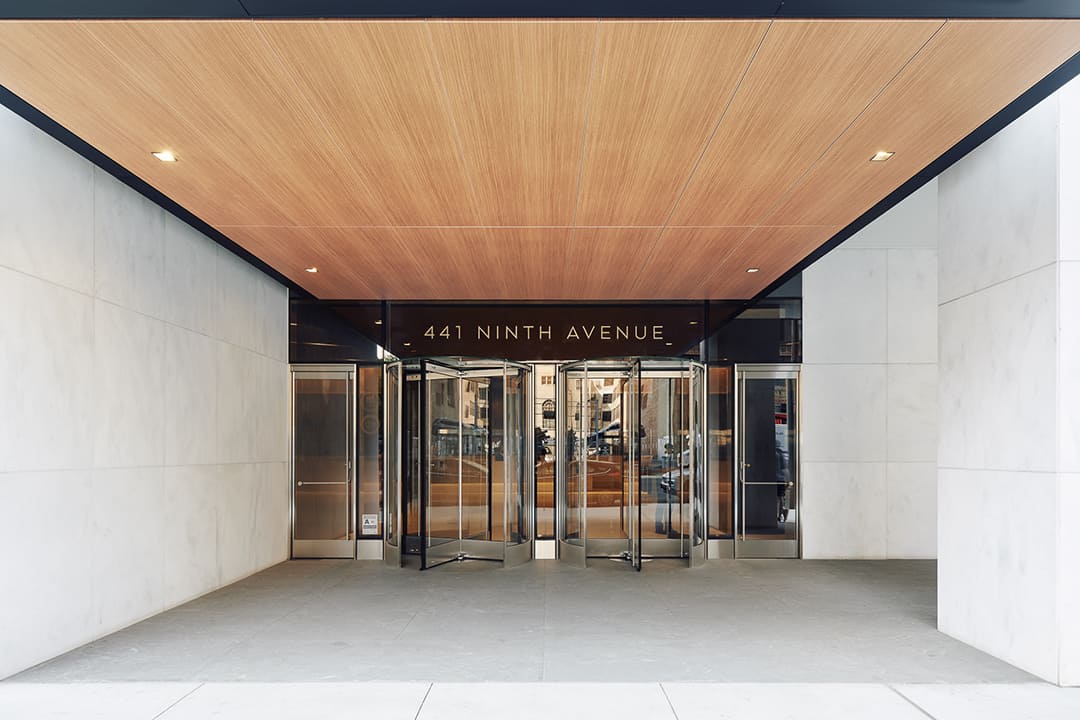
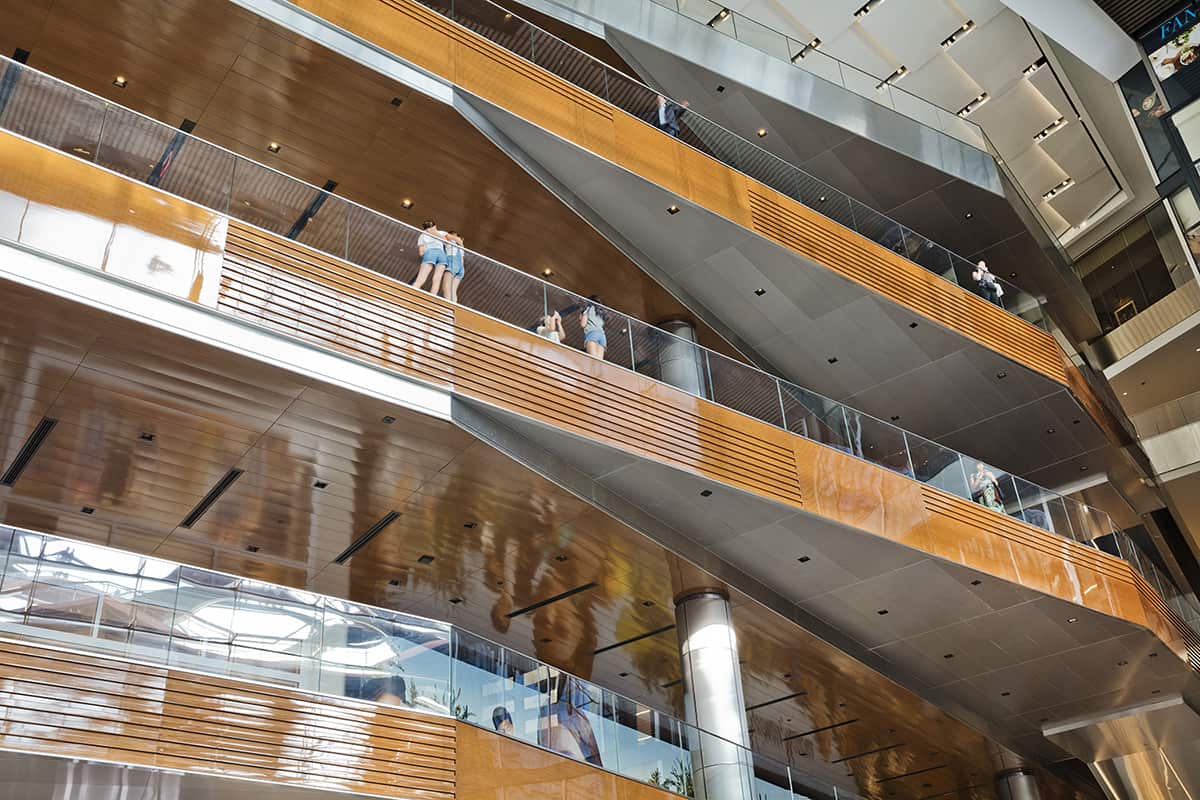

Dark tones
Featured images: Aria Convention Center Ceiling Baffles, Hard Rock Hotel Restaurant Fascia Cladding, Outlet Collection Winnipeg Facade
